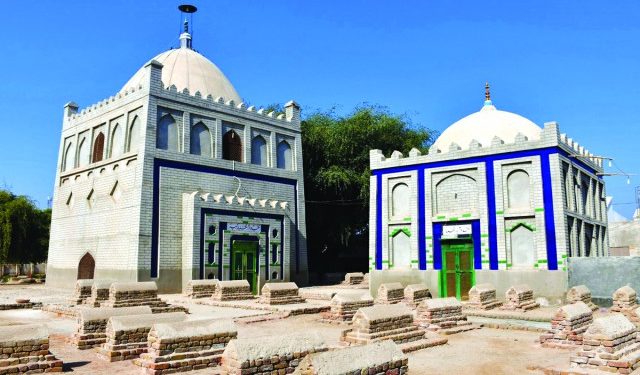
Kotri Kabir was formerly known as Rawar Kot or Rai Kot. Its history dates back to the pre-Islamic era when the Buddhists were once the main community in the region.
By Dr. Zulfiqar Ali Kalhoro
Located on the National Highway in Mehrabpur taluka in Naushero Feroz district is the historic town of Kotri Kabir, which was formerly known as Rawar Kot or Rai Kot. Its history dates back to the pre-Islamic era when the Buddhists were once the main community in the region. After the Arab conquest of Sindh, like other villages and towns, the populace of this town also embraced Islam.
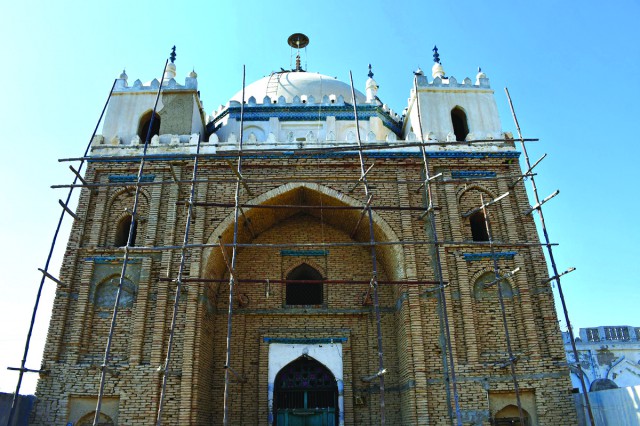
Muhammad Ishaque, who was believed to have arrived after the Arab conquest of Sindh, became the first administrator of Rawarkot. He settled and died there. Muhammad Ishaque was the ancestor of the present Siddiqui family of Kotri Kabir. After the death of Muhammad Ishqaue his son, Sakhi Huzoori Haroon became the new administrator of Rawar Kot or Rai Kot – and he was also known for his piety. Sakhi Huzoori Haroon died in 171 AH/ 787 and was buried in the old graveyard of Sawa Lakh. As apparent from the name ‘Sawa Lakh graveyard’ meaning a place where one hundred and twenty-five thousand graves are located, it reflects the antiquity of the town. It was probably the first old settlement before the Arab period in Sindh. Later after the Arab conquest of Sindh, the town might have become the first important settlement of the religious scholars, Sufis and soldiers. Over time, the town expanded and became the main center of Islamic learning where Siddiqui, Qazi, Ansari and Makhdoom scholars and noblemen settled.
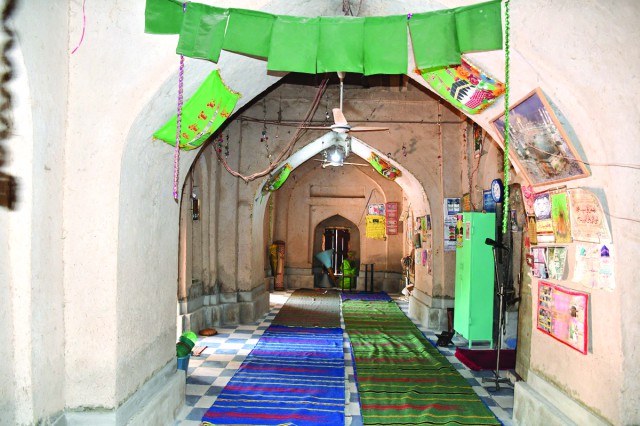
Today, Kotri Kabir is a small town and noted for the shrines of Siddiqui Sufi saints. There are seven shrines of Siddiqui Sufi saints, five at Kotri Kabir and two at Behlani. The popular Sufi shrines of Siddiqui Sufi saints include Sakhi Huzoori Haroon, Makhdoom Mahmood, Makhdoom Muhammad Kabir, Sakhi Allahyar and Makhdoom Yar Muhammad at Kotri Kabir and Makhdoom Dars and Makhdoom Muhammad Ibrahim at Behlani.
After the Arab conquest of Sindh, the town might have become the first important settlement of the religious scholars, Sufis and soldiers. Over time, the town expanded and became the main centre of Islamic learning where Siddiqui, Qazi, Ansari and Makhdoom scholars and noblemen settled
Kotri Kabir is named after an eminent Naqshbandi saint Makhdoom Muhammad Kabir. Some scholars believe that he was a Naqshbandi- Suhrawardi saint. The town came to be named after Makhdoom Shaikh Kabir as Kotri Kabir, most probably in the second quarter of the sixteenth century. It is not confirmed when he died. Mir Ali Sher Qani mentions Shaikh Muhammad Kabir in his book Tufat al Kiram which was written in 1758 AD. He seemed to have lived many years before the completion of the book by Mir Ali Sher Qani. According to Mumtaz Ali Dangraj, the author of Kotri Muhammad Kabir Jo Siddiqui Khandan (The Siddiqui family of Kotri Muhammad Kabir) Makhdoom Muhammad Kabir was a contemporary of Makhdoom Nuh Halai and Makhdoom Jafar Bubakai. If one is to believe the information provided by Mumtaz Ali Dangraj, one can argue that Makhdoom Muhammad Kabir lived in the sixteenth century.
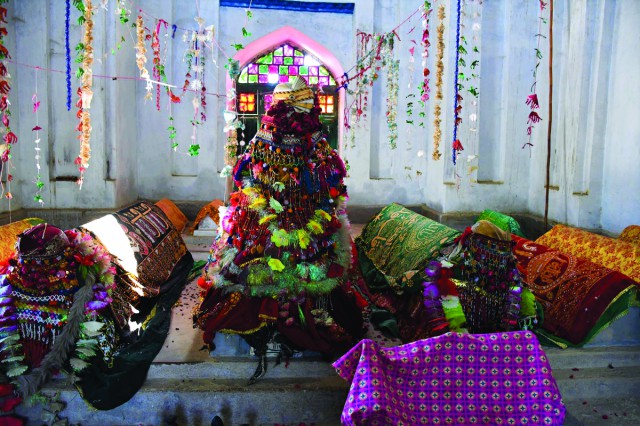
Kotri Kabir became a centre of Islamic learning during the time of Makhdoom Muhammad Kabir. He built a mosque and madrasah in the town where he started to teach theology and mysticism. Many people responded to his teachings and became his disciples. Many disciples who studied under his tutelage later spread his ideology in their respective villages and towns.
The mosque built by Makhdoom Muhammad Kabir still stands in Kotri Kabir which is now called the Jamia mosque. It is a three-domed structure, built of mud bricks and mud-plastered. The interior of the mosque was probably painted – which is now lost due to frequent renovations.
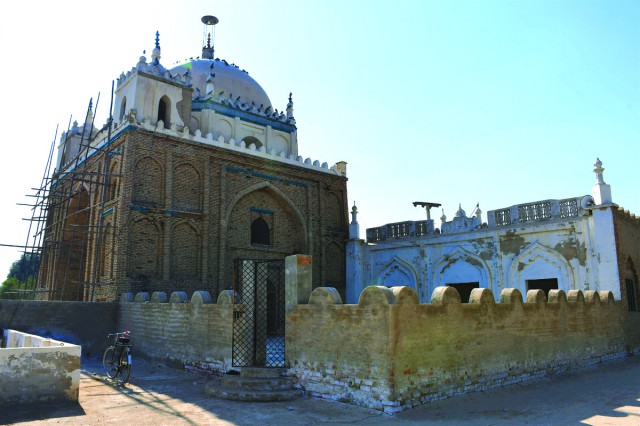
Makhdoom Muhammad Kabir had four sons: Mian Rehmat Shah, Mian Qasim, Mian Allah Dost and Sakhi Allahyar. All the sons of Makhdoom Muhammad Kabir were famous scholars and Sufis saints of Kotri Kabir. Some of the Sufis and scholars from the family of Makhdoom Muhammad Kabir wrote books on the subjects of Sufism, Fiqah, Tafsir etc. They also established a library and purchased books from the Islamicate world – it was then the most famous library in Sindh. Later it was renamed Al Kabir Academy, which houses about 10,000 books in different languages on different subjects.
Today the tombs of Siddiqui Sufi saints of Kotri Kabir are sites of pilgrimage for his disciples who come from different districts of Sindh and Balochistan. The most important shrine complex belongs in Kotri Kabir belongs to Makhdoom Muhammad Kabir. The tomb of Makhdoom Muhammad Kabir seems to have been built during the Kalhora period (1700-1783). The ornamental lantern which crowns the dome of the tomb was a special feature of the Kalhora-period tombs. Apart from the grave of Makhdoom Muhammad Kabir, the tomb also contains several graves of his descendants. On the right of his grave is that of his son Mian Rehmat Shah and on the left his other son Mian Qasim. Both were also renowned Sufis and scholars of Kotri Kabir.
Some of the Sufis and scholars from the family of Makhdoom Muhammad Kabir established a library and purchased books from around the Islamicate world. It was then the most famous library in Sindh
Adjacent to the mausoleum of Makhdoom Muhammad Kabir is the tomb of his great-grandson Makhdoom Yar Muhammad, which was built during the Talpur period (1783-1843). Makhdoom Mian Yar Muhammad son of Makhdoom Muhammad Aqil was an eminent Sufi, a scholar and a teacher of Kotri Kabir. During his time, Kotri Kabir became the centre of Islamic learning. Many people enrolled them as his disciples and studied in madrasah under his tutelage. Muhammad Rashid Shah alias Rozay Dhani, the founder of the Rashidiyya Sufi sub-order which was a combination of both Qadiri and Naqshbandi tariqas in Sindh, also studied in the madrasah of Makhdoom Yar Muhammad (d. 1805).
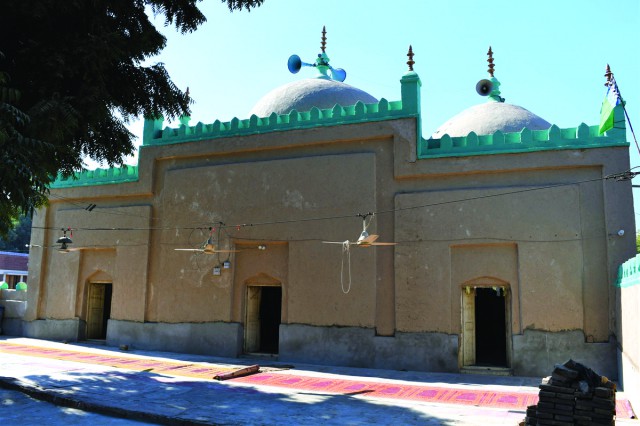
To the south of the tombs of Makhdoom Muhammad Kabir and Makhdoom Yar Muhammad is located a three-domed mosque which is believed to have been built by Mian Wajiuddin. Mian Wajiuddin son of Mian Qasim was an eminent Sufi and scholar of Kotri Kabir. He built two mosques in 1118 AH/1706 AD and 1163 AH/ 1750 AD respectively. The grave of Mian Wajiuddin is located in front of the tomb of Makhdoom Muhammad Kabir.
To the south of the shrine complex of Makhdoom Muhammad Kabir is located Sawa Lakh graveyard where one finds the grave of Muhammad Ishaque, the ancestor of Siddiqui Sufi saints of Kotri Kabri. In this graveyard are also found tombs of Sakhi Huzoori Haroon the son of Muhammad Ishaque. According to Makhdoom Adnan Faiz Siddiqui Pirzado, the Gadi Nashin of the seven shrines of Siddiqui Sufis in Kotri Kabir and Behlani, Sakhi Huzoori Haroon died per the inscription on his grave in 171 AH /787 AD. This inscription is now in the custody of Makhdoom Adnan Faiz Siddiqui Pirzado. The dome of the tomb of Sakhi Huzoori Haroon has caved in. To the west of the structure of Sakhi Huzoori Haroon is located the tomb of Makhdoom Mahmood, the father of Makhdoom Muhammad Kabir. This tomb also houses the graves of Muhammad Taqi and Muhammad Asmatullah.
About 1 km east of the shrine complex of Makhdoom Muhammad Kabir is located the tomb of Sakhi Allahyar. He was the son of Makhdoom Muhammad Kabir. Sakhi Allahyar was known for his generosity and hence was called Sakhi (generous). He was a Qadiri Sufi and became the most celebrated saint after his father Makhdoom Muhammad Kabir in Kotri Kabir. The tomb of Sakhi Allahyar contains the graves of his sons and grandsons. He had three sons- Mian Waliullah, Mian Khuda Dost and Mian Din Muhammad- who were also known for their piety.
The tomb of Sakhi Allahyar is a massive and impressive structure that was built in the Kalhora period (1700-1783). The distinctive features of the tomb are alcoves and corner kiosks. One does not find such a massive structure in the entire district of Nausharo Feroz. The majority of the tombs of Siddiqui Sufi saints have now been renovated – except for the tomb of Sakhi Allahyar which has still retained its original beauty.
__________________
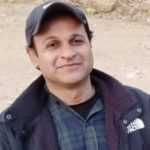 The author is an anthropologist. He may be contacted at zulfi04@hotmail.com. All photos are by the author
The author is an anthropologist. He may be contacted at zulfi04@hotmail.com. All photos are by the author
Courtesy: The Friday Times (Published on April 30, 2021) Sindh Courier has reproduced this article with the consent of author.